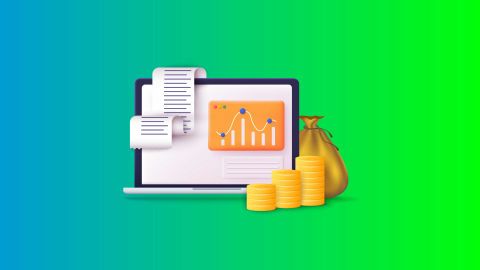Gold or silver what should you choose to add more shine to your investment portfolio? It’s not just about picking a precious metal; it’s about choosing the one that fits your financial goals, risk appetite, and the economic landscape you're navigating.
Silver tends to be the more energetic player. It reacts quickly to market changes thanks to its industrial uses offering the possibility of higher gains, but with more ups and downs. Gold, on the other hand, plays the long game. It’s seen as a safer asset, especially when inflation rises or the economy shakes.
And if you are looking for even more flexibility, mutual funds can help you balance both risk and returns through diverse asset classes. Compare Mutual Fund Options Now!
In this article, we’ll walk you through the key features of both metals, how they perform in different scenarios, and what you should consider before investing. We’ll also explore the different ways you can invest in them and help you make an informed call on which one gold or silver suits your portfolio better.
Gold vs. silver: Which is better for your portfolio?
Gold and silver both bring something valuable to the table, but they don’t behave the same way in a portfolio. Gold is often seen as the go-to for stability—it has a track record of holding its ground when markets get rough. That’s why investors often flock to gold during recessions or times of high inflation.
Silver, meanwhile, is a bit more dynamic. It’s not just a precious metal—it’s also heavily used in industries like electronics, solar energy, and medicine. This dual role makes it more volatile, but also gives it the potential for higher returns when industrial demand is booming.
So, what’s better for you? That depends on your strategy. If you’re looking for a stable store of value, gold might feel more reassuring. But if you’re comfortable riding the waves for potentially higher returns, silver could offer more excitement.
1. Volatility
When you think of price swings, silver usually makes the bigger moves. Its value often rises or falls faster than gold’s. Why? Because silver’s demand isn’t just about jewellery or investing—it’s also linked to industries like solar tech and automotive. That means any shift in the global economy or manufacturing can directly impact silver’s price.
This makes silver appealing if you're looking for short-term growth or willing to take on higher risk. But for those who prefer a calmer ride, gold is historically more stable. It doesn’t jump as dramatically, which can offer peace of mind when markets feel unpredictable.
For investors who want to balance silver's volatility with steadier instruments, mutual funds offer exposure to both commodities and broader asset classes. Explore Top-Performing Mutual Funds!
2. Liquidity
Liquidity is all about how quickly you can turn your investment into cash. Both gold and silver are highly liquid assets, meaning you can usually sell them easily when needed. But gold tends to have a slight edge here. Because of its universal demand and status as a financial safe haven, gold is typically easier to sell quickly without impacting its price. Silver is still liquid—but compared to gold, it may take just a little more effort, especially when you’re dealing with larger volumes.
3. Demand
Gold and silver are both popular, but the reasons people want them can differ. Gold has strong emotional and cultural value—especially in countries like India—where it plays a major role in weddings, festivals, and family traditions. It's also used in electronics and has been trusted for centuries as a store of wealth. Silver, on the other hand, is more of a workhorse. Around 60% of all mined silver goes into industrial uses—from solar panels and electronics to medical devices. This industrial demand makes silver highly sensitive to economic conditions. So while both metals are in demand, silver’s value often rises and falls with the ups and downs of global industries.
If you are looking to diversify beyond metals, mutual fund investments can complement gold and silver with exposure to equity, debt, or hybrid assets based on your goals. Start SIP with Just Rs. 100!
4. Storage
Storing precious metals might sound simple, but it’s a crucial factor to consider. Gold wins when it comes to convenience—it’s compact, easier to store, and doesn’t tarnish over time. If you invest Rs. 10 lakhs in gold, it won’t take up much space, and storage is relatively straightforward. Silver, however, is bulkier. You’ll need more room to store the same value of silver, and it’s prone to tarnishing, which means you may need a special climate-controlled space to keep it in top condition. That adds to the overall cost and effort involved.
5. Stockpile and affordability
Silver scores high on affordability. You can own a lot more silver for the same price as a small quantity of gold. For instance, just half an ounce of gold can buy over a kilo of silver today. The gold-to-silver ratio currently sits at about 120:1—one of the highest in history. This makes silver more accessible to new or budget-conscious investors. On the flip side, gold is preferred by central banks and governments who maintain large reserves as a backup during financial uncertainty. Silver isn’t usually stockpiled in the same way, which means it plays a different role in the global financial ecosystem.
Difference between gold and silver
To make it easier, here’s a quick comparison between gold and silver as investment options:
Basis |
Gold |
Silver |
Volatility |
Gold is more stable and experiences fewer price swings over time. |
Silver is more volatile due to its industrial usage and smaller market size. |
Liquidity |
Gold has a wider investor base and is easier to sell quickly. |
Silver is also liquid but lags slightly behind gold in market depth. |
Storage |
Takes up less space and is cheaper to store. |
Requires more space and incurs higher storage costs. |
Demand |
Driven by cultural, emotional, and industrial factors. |
Mostly driven by industrial usage and technological demand. |
Affordability |
Higher price per ounce—less accessible for small-scale investors. |
Cheaper per ounce—easier entry point for beginners. |
Stockpile |
Frequently held in reserves by governments and financial institutions. |
Less commonly stockpiled, more actively used in industry. |
Factors to consider when investing in gold or silver
Before you decide whether gold or silver fits better in your portfolio, it’s important to understand what makes each metal tick. While both serve as hedges against inflation and economic instability, they behave differently based on market conditions. Gold offers steadiness during market turmoil, whereas silver’s price is more tied to industrial activity. Depending on your risk tolerance, investment horizon, and financial goals, one might be more suitable than the other—or perhaps a mix of both could offer the balance you’re looking for.
1. Silver may be more tied to the global economy
Silver isn’t just a precious metal it’s also a major player in industrial innovation. From solar panels to car electronics to smartphones, silver is used across technologies that are shaping the future. Because of this, its value often mirrors the health of the global economy. When economies are growing, demand for silver tends to increase. But in times of slowdown, the same connection can work against you. So, if you’re betting on silver, you’re also placing a wager on economic momentum.
2. Silver is more volatile than gold
Silver’s price tends to jump around a lot more than gold. On any given day, it might move two to three times as much. That kind of volatility can be a double-edged sword. If you’re someone who thrives on market action and doesn’t mind short-term swings, silver could offer opportunities. But if you prefer more predictability in your investments, gold’s steady performance might be a better match. It all comes down to how comfortable you are riding the ups and downs.
3. Gold has been a more powerful diversifier than silver
While silver can diversify your portfolio with its moderate positive correlation to stocks, bonds, and commodities, gold has consistently been a more powerful diversifier. Gold's lack of strong ties to the stock market and its minimal correlation with other major asset classes make it a reliable asset during economic downturns, as its value is less influenced by industrial demand.
4. Silver is currently cheaper than gold
Silver is generally more affordable per ounce than gold, making it accessible to smaller retail investors who want to hold physical precious metals. This lower price point can be appealing if you are looking to invest in tangible assets without a significant financial commitment.
Ways to invest in gold and silver
There’s more than one way to invest in gold and silver today, and not all of them involve physically holding the metal. Whether you’re a traditional investor who prefers bullion or someone looking for convenience, modern financial instruments offer multiple options.
You can choose physical metals like coins and bars, gold and silver ETFs for market-based exposure, or even mining stocks and mutual funds that are indirectly linked to precious metal performance. Each method comes with its own pros, costs, and accessibility factors, so understanding them can help you pick what fits your financial strategy best.
Physical metals
One of the oldest and most direct ways to invest is through physical gold and silver typically in the form of coins, bars, or bullion. Many investors prefer this option because it offers tangible ownership of the asset.
You can store these in third-party depositories or take delivery and keep them at home but remember: there are added costs involved. Premiums over spot price, secure storage, and insurance can all eat into your returns. Still, for those who value control and long-term wealth preservation, physical assets hold strong appeal.
Exchange-traded funds or ETFs
For investors who want to skip the hassle of storage and physical handling, ETFs provide a practical alternative. Gold and silver ETFs allow you to gain exposure to precious metals without directly owning them.
You simply buy ETF units through a brokerage account, and the fund operator handles everything from metal storage to portfolio management. But one trade-off is taxation—some precious metal ETFs are taxed as collectibles, which can be costlier than traditional investments. Despite this, ETFs remain a top pick for ease of use and liquidity.
If you are exploring ETFs as part of your strategy, the Bajaj Finserv Mutual Fund Platform also offers access to a range of ETF options alongside 1,000+ mutual fund schemes. Open Your Mutual Fund Account Today!
Mining stocks and funds
Another way to participate in the gold and silver market is by investing in mining stocks or mutual funds that hold shares of mining companies. These investments don’t offer direct exposure to metal prices but are closely tied to them, since the profitability of mining companies rises and falls with commodity prices.
This method can deliver stronger gains when metal prices are rising, as companies often outperform the underlying asset. However, they also carry operational and market risks. Performance can be influenced by factors like management efficiency, mining costs, and regulatory issues—making them more volatile than ETFs.
Gold vs silver: Long-term returns
Historically, gold has delivered better long-term returns compared to silver. Its reputation as a safe-haven asset means it tends to attract more investors during economic downturns, helping it maintain steady performance over the decades.
That said, silver has seen strong rallies in certain periods especially in recent years when its industrial demand has surged. Its affordability and use in sectors like electronics and solar energy make it attractive for long-term growth. But the key takeaway is this: silver may offer higher peaks, but gold tends to deliver more consistent and stable long-term results.
Gold vs silver: Inflation hedge
Both gold and silver are considered effective tools to combat inflation. When inflation rises, the value of money drops—but these metals tend to retain or even increase in value during such periods.
Gold has traditionally been the go-to inflation hedge due to its scarcity and universal acceptance. Silver, while also effective, has greater exposure to industrial demand, which can cause its price to fluctuate more. So while both can shield your wealth, gold is generally seen as the stronger and more consistent performer when inflation threatens your purchasing power.
Should you invest in gold or silver?
Deciding whether to invest in gold or silver depends on your financial goals, risk appetite, and investment horizon. If you're seeking safety and value preservation during uncertain times, gold may be the better choice due to its stability and long-standing status as a global store of value.
If you're willing to take on more risk for potentially higher returns, silver might be suitable, especially if you believe industrial demand will rise. Many seasoned investors opt for a balanced approach, allocating portions of their portfolio to both metals to capitalise on their unique strengths.
Diversifying with gold or silver is just one step pairing them with mutual funds or ETFs can help balance risk and build long-term growth across market cycles. Explore Top-Performing Mutual Funds!
Key takeaways
Before choosing between gold and silver, it's helpful to summarise the key differences:
- Both metals serve as a hedge against inflation and offer portfolio protection.
- Silver tends to be more volatile and responsive to economic cycles.
- Gold offers greater stability and is a more effective diversifier during downturns.
- You can invest through physical assets, ETFs, or mining-related stocks depending on your preference and risk level.
Conclusion
In the gold vs silver debate, there’s no one-size-fits-all answer. Both metals bring valuable qualities to your investment portfolio whether it’s gold’s stability or silver’s potential for growth through industrial demand. The key lies in understanding your personal investment goals, risk appetite, and the role you want precious metals to play in your overall strategy.
If you want to invest in gold ETFs, you should check out Bajaj Finserv Mutual Fund Platform. It has over 1,000 mutual fund schemes that you can choose from. The platform is user-friendly, making it easier to continue investing in mutual funds, and offers tools like a mutual fund calculator which can help you to compare mutual funds and choose the ones that are best suited given your financial goals.








